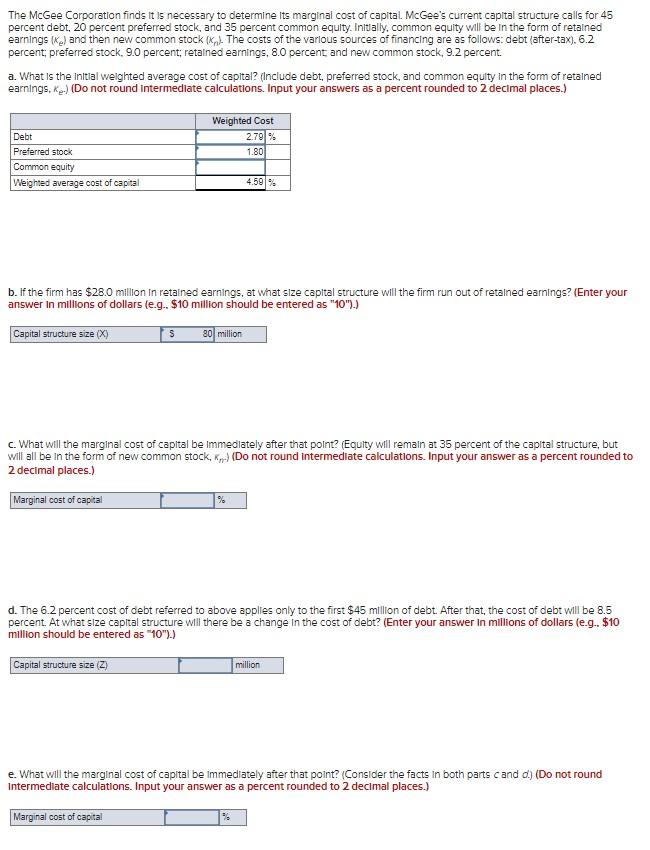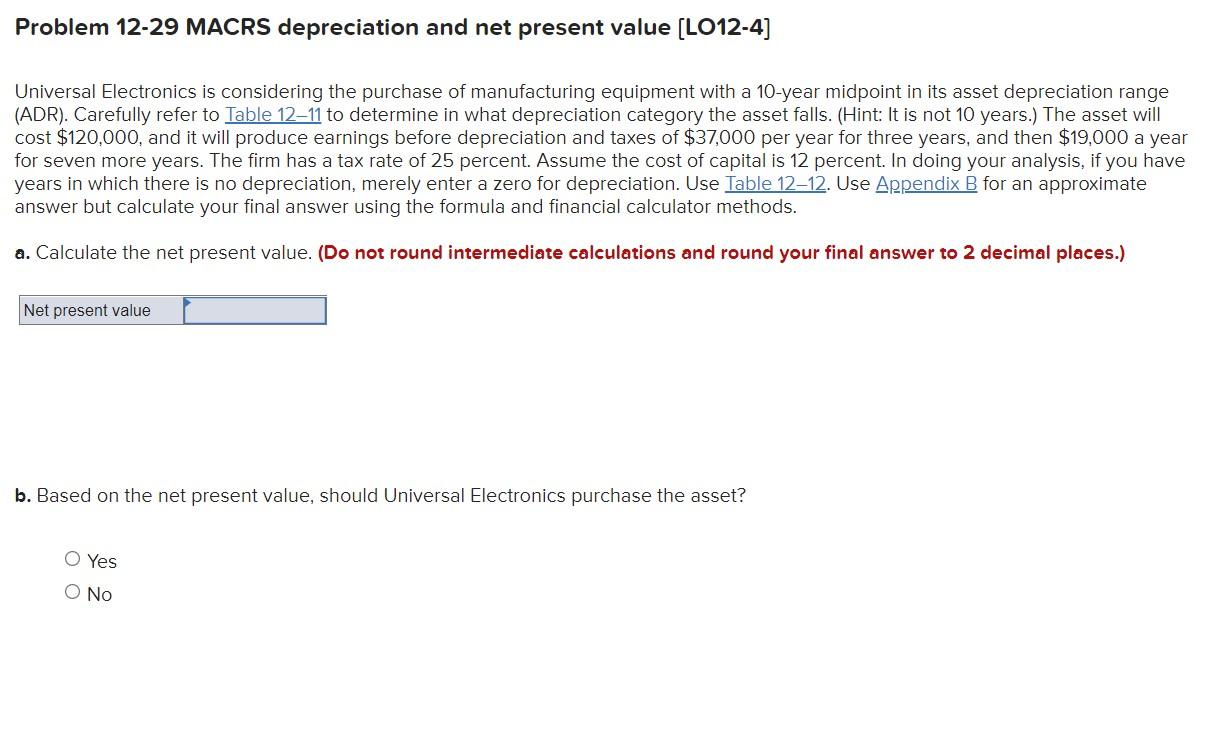


Table 12-11 Categories for depreciation write-off Class 3-year MACRS All property with ADR midpoints of four years or less. Autos and light trucks are excluded from this category. 5-year MACRS Property with ADR midpoints of more than 4, but less than 10 years. Key assets in this category include automobiles, light trucks, and techno- logical equipment such as computers and research-related properties. 7-year MACRS Property with ADR midpoints of 10 years or more, but less than 16 years. Most types of manufacturing equipment would fall into this category, as would office furniture and fixtures. 10-year MACRS Property with ADR midpoints of 16 years or more, but less than 20 years. Petroleum refining products, railroad tank cars, and manufactured homes fall into this group. 15-year MACRS Property with ADR midpoints of 20 years or more, but less than 25 years. Land improvement, pipeline distribution, telephone distribution, and sewage treatment plants all belong in this category. 20-year MACRS Property with ADR midpoints of 25 years or more (with the exception of real estate, which is treated separately). Key investments in this cat- egory include electric and gas utility property and sewer pipes. 27.5-year Residential rental property if 80% or more of the gross rental income is MACRS from nontransient dwelling units (e.g., an apartment building); low- income housing. 31.5-year Nonresidential real property that has no ADR class life or whose class MACRS life is 27.5 years or more. 39-year MACRS Nonresidential real property placed in service after May 12, 1993. The McGee Corporation finds it is necessary to determine its marginal cost of capital. McGee's current capital structure calls for 45 percent debt, 20 percent preferred stock, and 35 percent common equity. Intually.common equity will be in the form of retained earnings Ke) and then new common stock (Kl. The costs of the various sources of financing are as follows: debt (after-tax). 6.2 percent preferred stock, 9.0 percent; retained earnings, 8.0 percent and new common stock, 9.2 percent. a. What is the initial weighted average cost of capital? (Include debt, preferred stock, and common equity in the form of retained earnings, K.) (Do not round Intermediate calculations. Input your answers as a percent rounded to 2 decimal places.) Weighted Cost 2.79% 1.80 Debt Preferred stock Common equity Weighted average cost of capital 450 % b. If the firm has $28.0 million in retained earnings, at what size capital structure will the firm run out of retained earnings? (Enter your answer in millions of dollars (e.g. $10 million should be entered as "10").) Capital structure size (X) S 80 million c. What will the marginal cost of capital be immediately after that point? (Equity will remain at 35 percent of the capital structure, but will all be in the form of new common stock, Kp) (Do not round intermediate calculations. Input your answer as a percent rounded to 2 decimal places.) Marginal cost of capital % d. The 6.2 percent cost of debt referred to above applies only to the first $45 million of debt. After that, the cost of debt will be 8.5 percent. At what size capital structure will there be a change in the cost of debt? (Enter your answer in millions of dollars (e.g.. $10 million should be entered as "10").) Capital structure size (7) million e. What will the marginal cost of capital be immediately after that point? Consider the facts in both parts cand a.) (Do not round Intermediate calculations. Input your answer as a percent rounded to 2 decimal places.) Marginal cost of capital 9 Problem 12-29 MACRS depreciation and net present value [LO12-4) Universal Electronics is considering the purchase of manufacturing equipment with a 10-year midpoint in its asset depreciation range (ADR). Carefully refer to Table 12-11 to determine in what depreciation category the asset falls. (Hint: It is not 10 years.) The asset will cost $120,000, and it will produce earnings before depreciation and taxes of $37,000 per year for three years, and then $19,000 a year for seven more years. The firm has a tax rate of 25 percent. Assume the cost of capital is 12 percent. In doing your analysis, if you have years in which there is no depreciation, merely enter a zero for depreciation. Use Table 1212. Use Appendix B for an approximate answer but calculate your final answer using the formula and financial calculator methods. a. Calculate the net present value. (Do not round intermediate calculations and round your final answer to 2 decimal places.) Net present value b. Based on the net present value, should Universal Electronics purchase the asset? Yes









